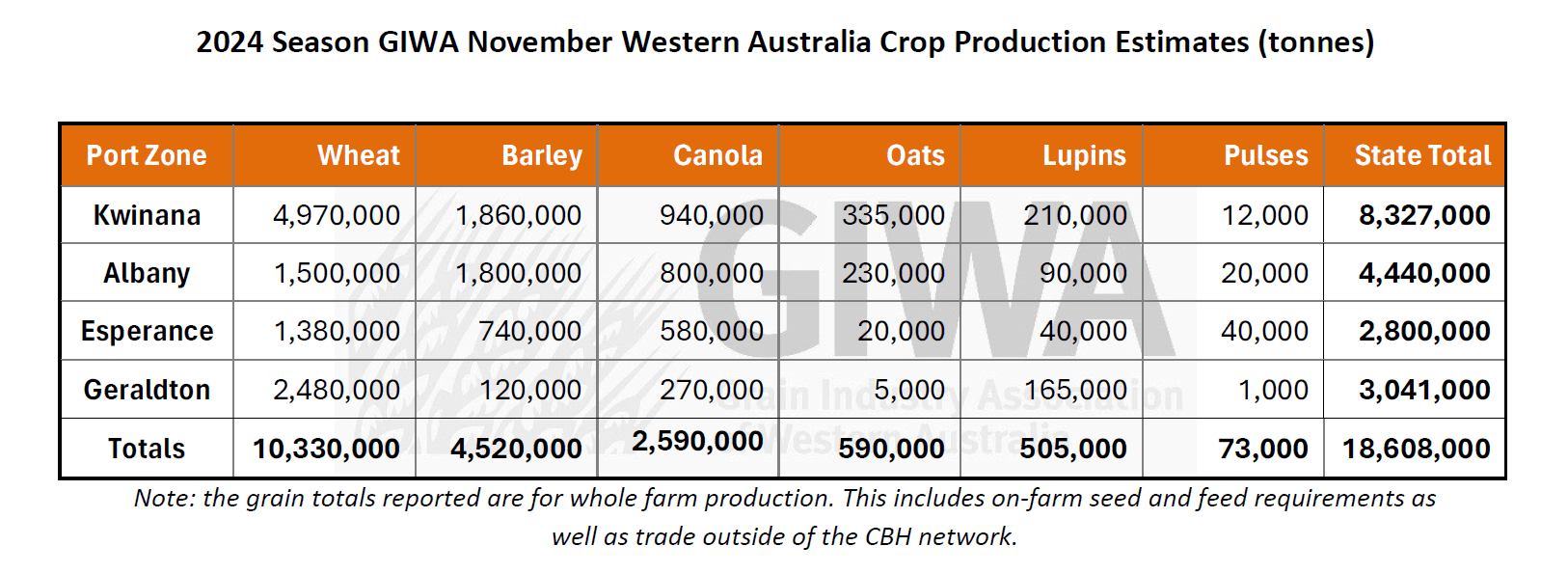
Harvesting canola at Nyabing, north of Albany in WA’s Great Southern region. Photo: Ty Kirby
WESTERN Australian growers are in the midst of harvesting what is expected to be WA’s third-largest winter crop on record, forecast by the Grain Industry Association of WA to yield 18.6 million tonnes (Mt).
In its November crop report released today, GIWA has added 855,000t, or 5 percent, to the 17.75Mt forecast in its October report.
“This will be remarkable considering the start of the season and below average rainfall for all regions, other than the northern agricultural zones,” GIWA report author Michael Lamond said.
Rain this week has stopped or slowed harvest in most areas of the state.
“Up until the widespread rains…this week, the grain was coming off at a record rate for this time of the year, due to good conditions, increased harvesting capacity, well-organised receival sites and seeing the impending rain coming from a long way out, growers were working longer hours.
“Light rainfall has been annoying in the central regions and heavier rain in the eastern fringes and southwestern fringes will be more than annoying as grain quality will likely be impacted.
“Grain yields have been higher than expected so far for all crops in most areas.”
GIWA’s estimates for oats, lupins, and pulses are unchanged from the October figures, while forecasts for wheat, barley, and canola have all posted significant rises.
The November wheat figure at 10.33Mt is up 4pc or 420,000t from 9.91Mt seen last month, barley has piled on 5pc or 200,000t to hit 4.52Mt, and canola is up 10pc or 235,000t to reach 2.59Mt.

Mr Lamond said while grain yields have been above average, the crops were on the verge of crashing, as indicated by high screenings in wheat, and very low retention in barley.
“Crops in some areas where there was no rain at all in September did actually crash and burnt off prematurely, which highlighted the precarious position crops were in during the grain-fill period.
“In years like this, high screenings and low retention are directly related to soil type, variety maturity, soil amelioration and of course spring rain, and this is being reflected in a large range in grain quality in grain delivered to date.”
Mr Lamond said while most of the grainbelt had well below-average rain, this varied across the regions, and tonnage required to supply market demand for the premium quality grades will likely be met.
“Canola crops seem to have been less affected by the very dry finish, with most yielding more than expected and grain quality, including oil percentages, is good.”
Mr Lamond said canola crops lacked the usual biomass due to the later start, and this help them conserve subsoil moisture to fill pods.
Lupin and oat grain yields are also coming in higher than expected.
“The area of both ended up more than our earlier estimates suggested, and this has contributed to the tonnage estimates pushing up.”
Source: GIWA
Further detail on crop conditions in individual WA port zones can be found as part of the full report on the GIWA website.

HAVE YOUR SAY